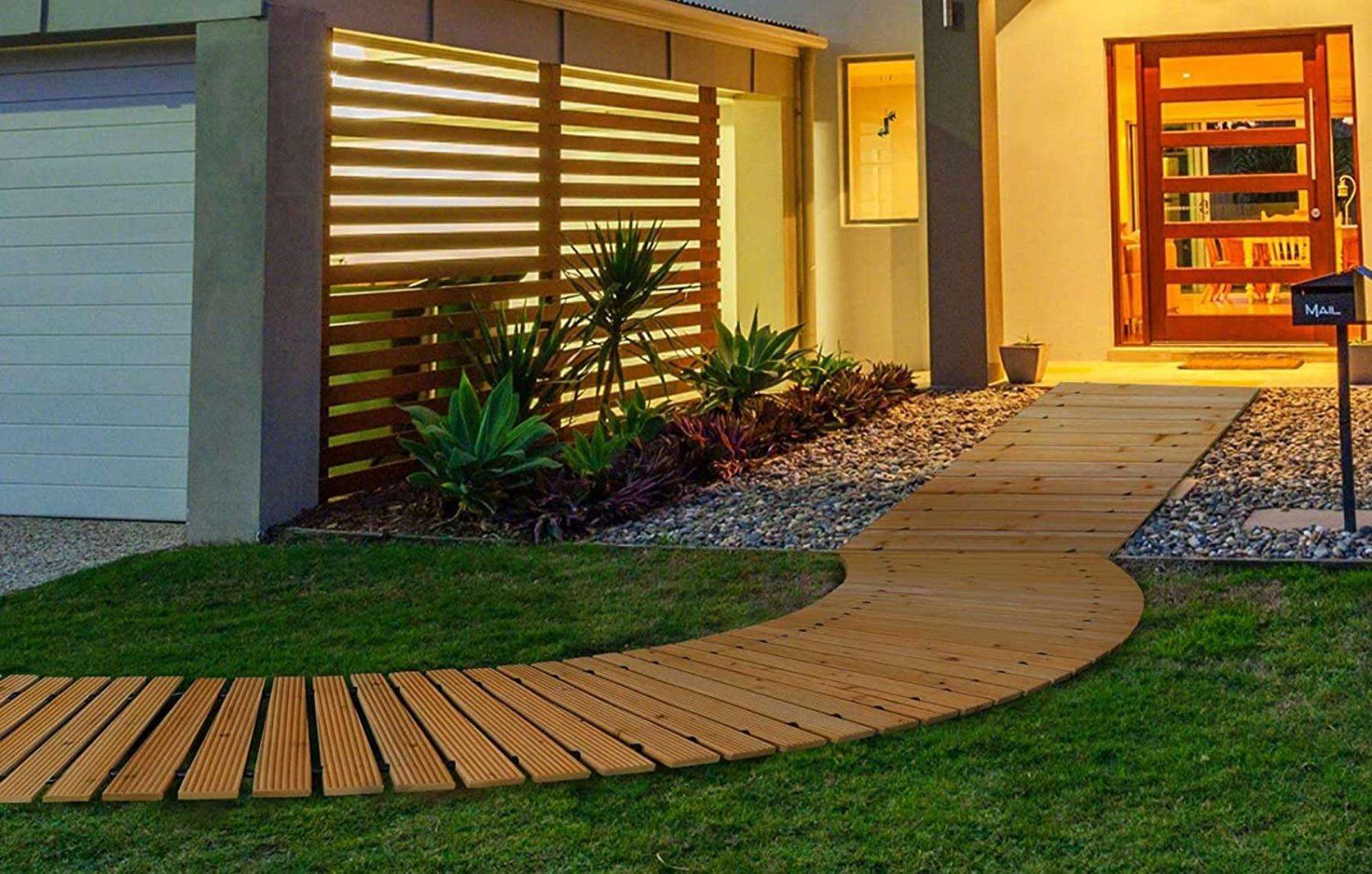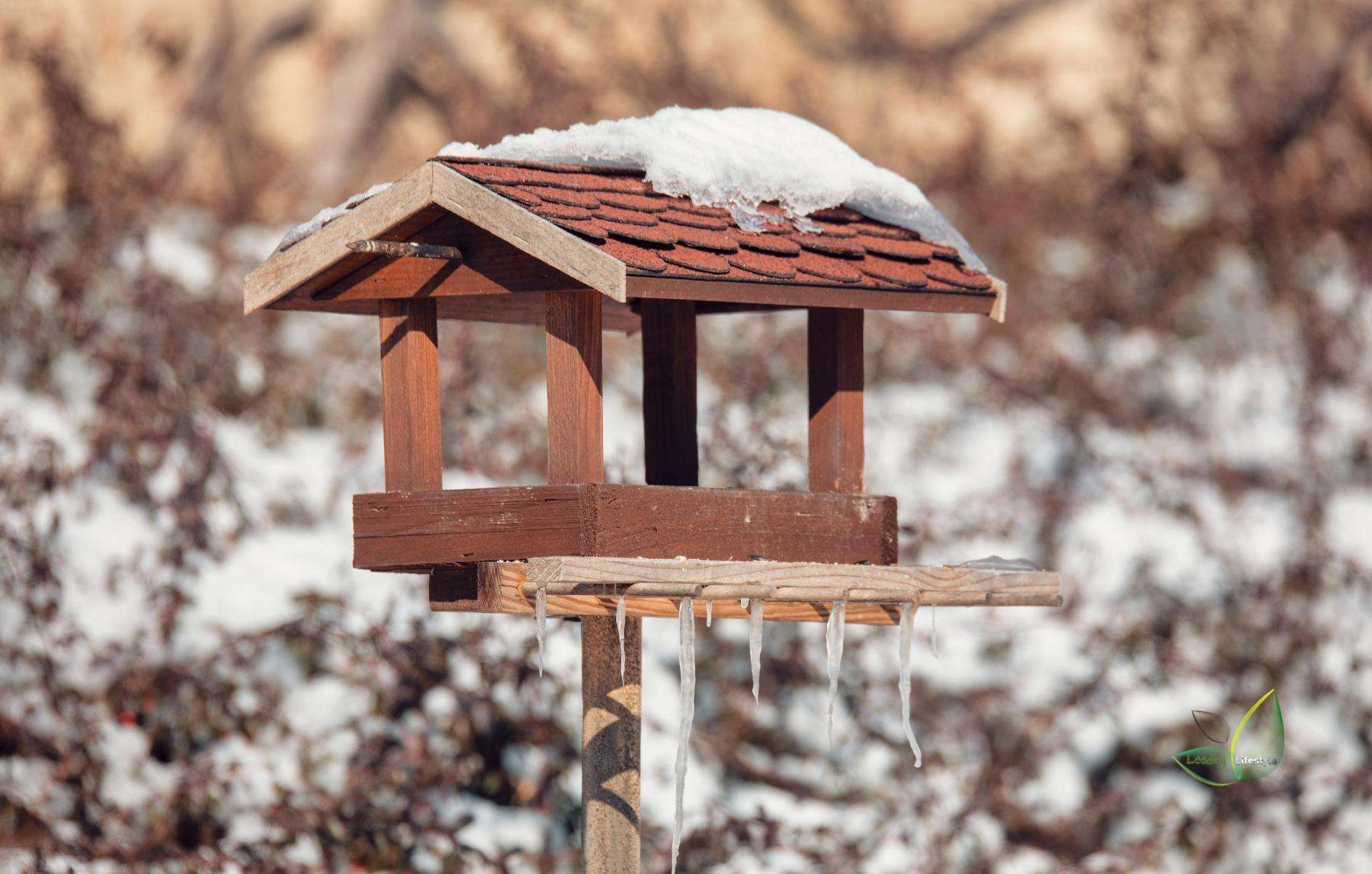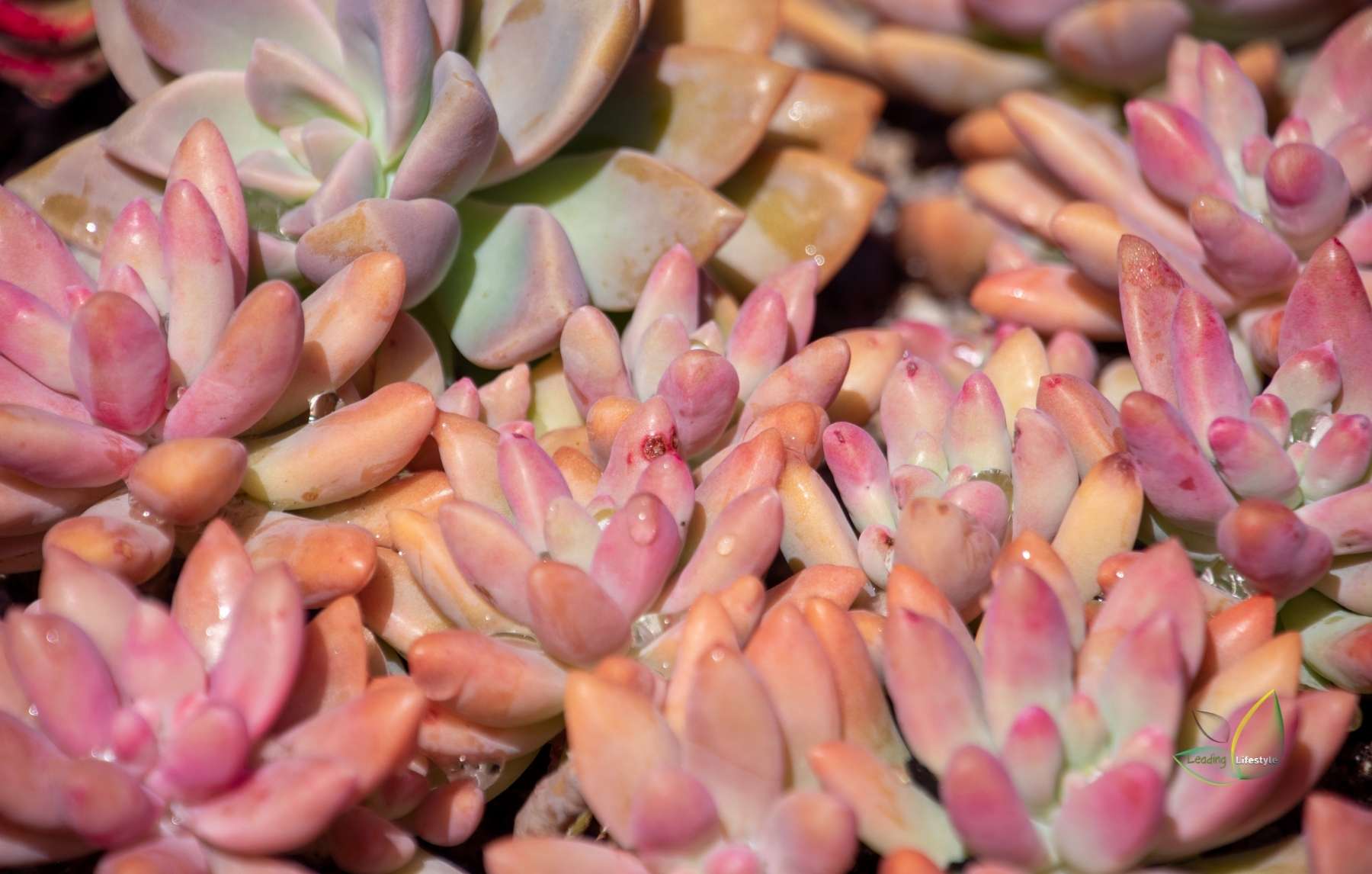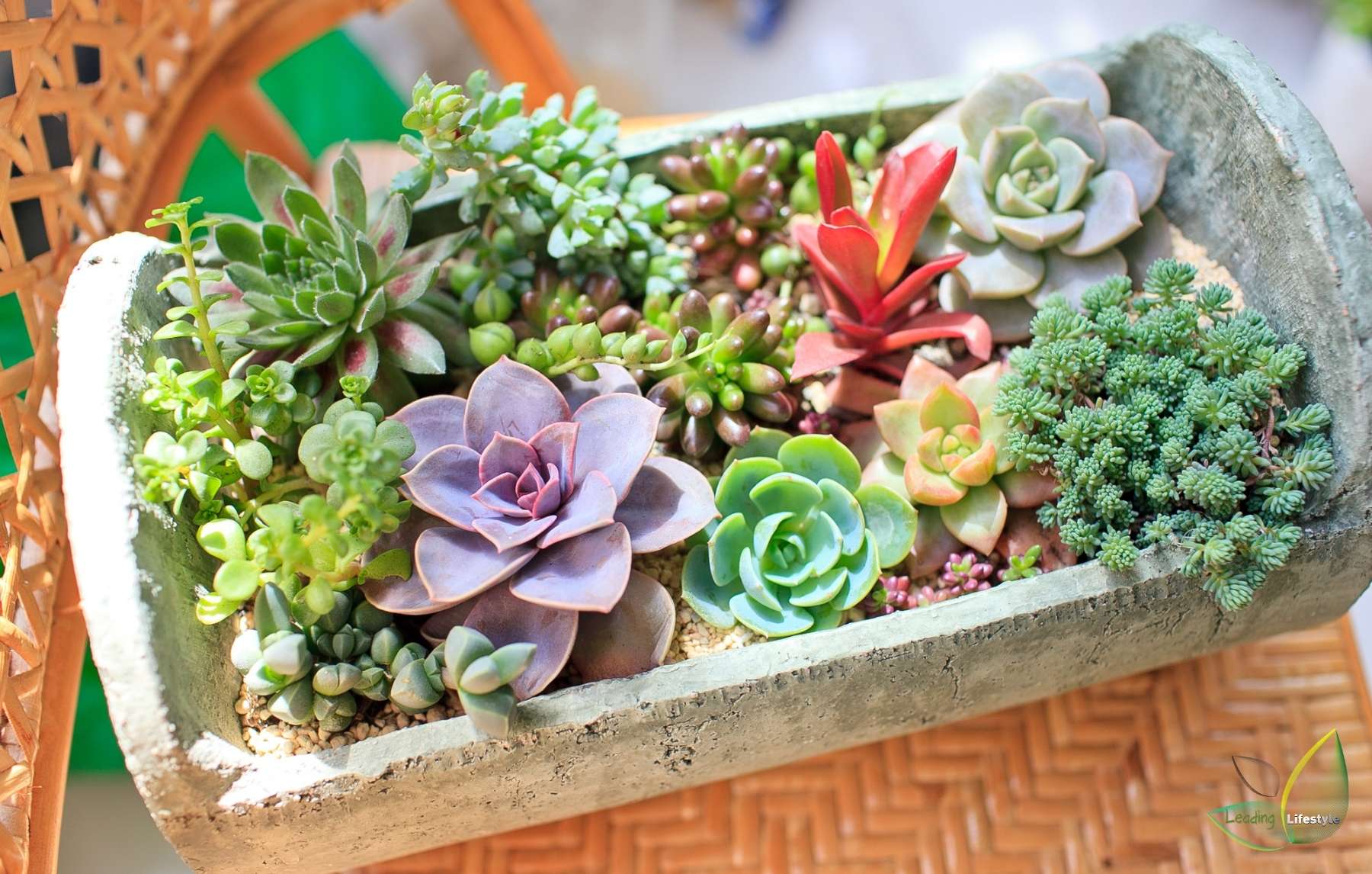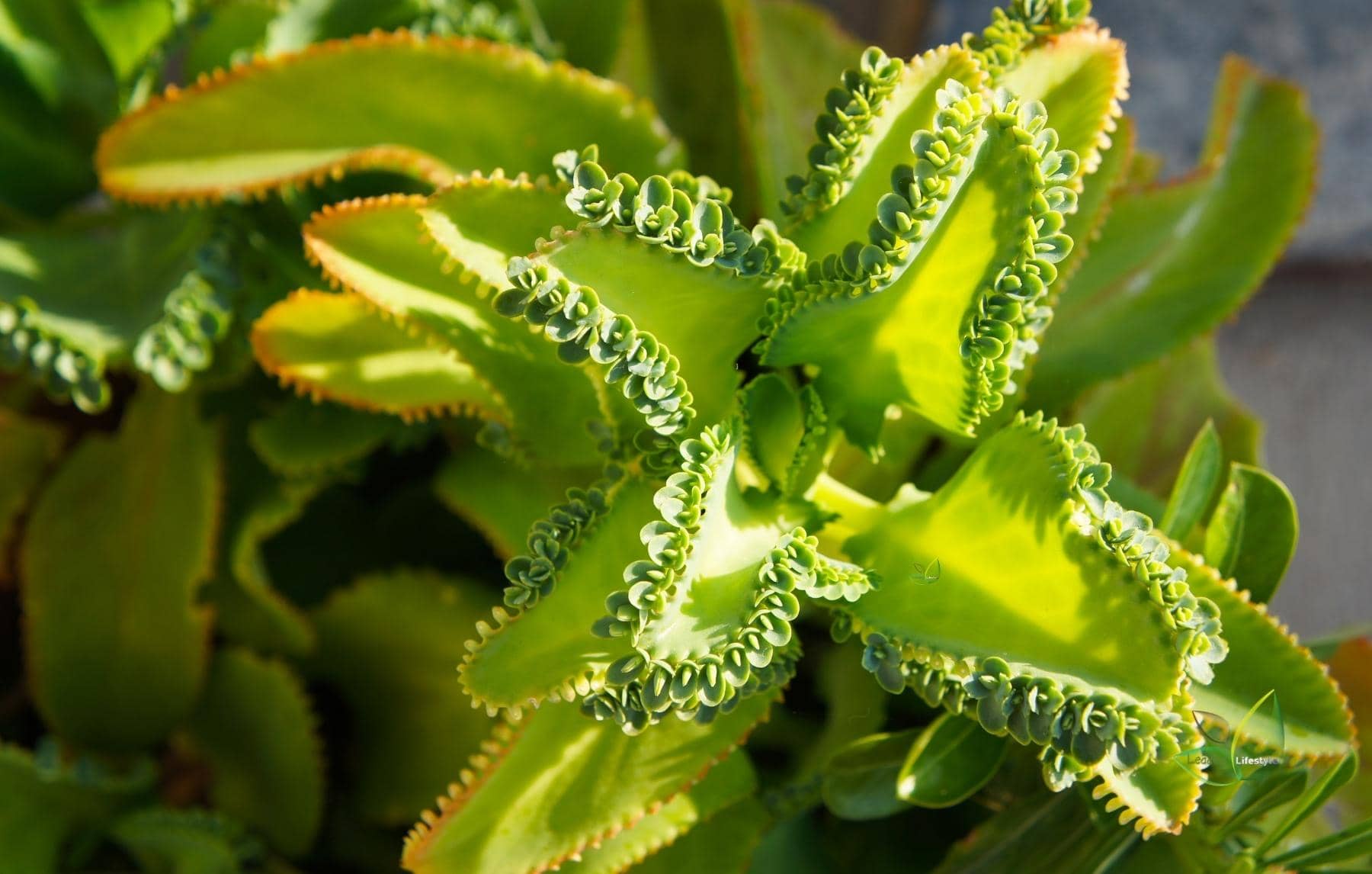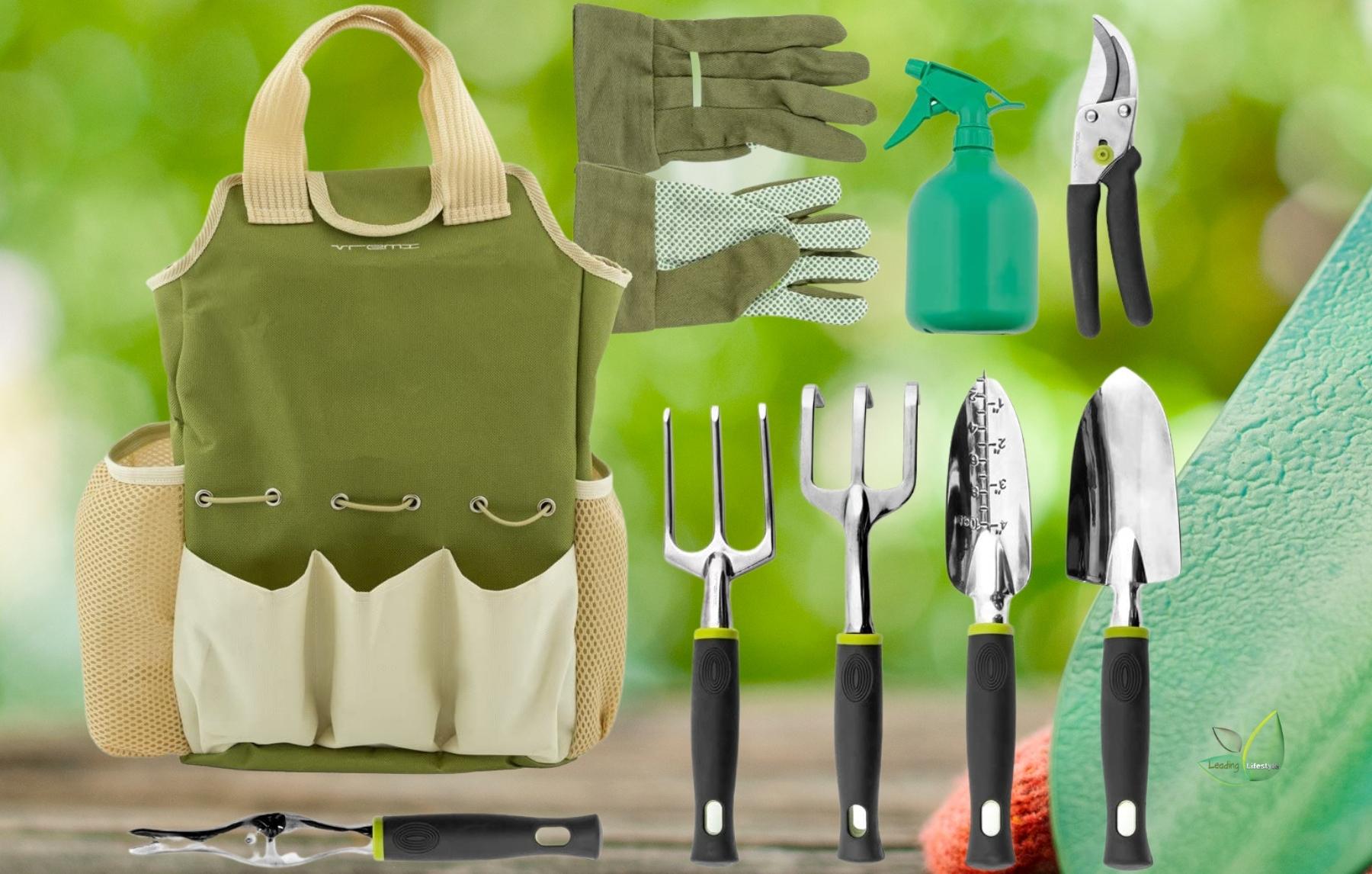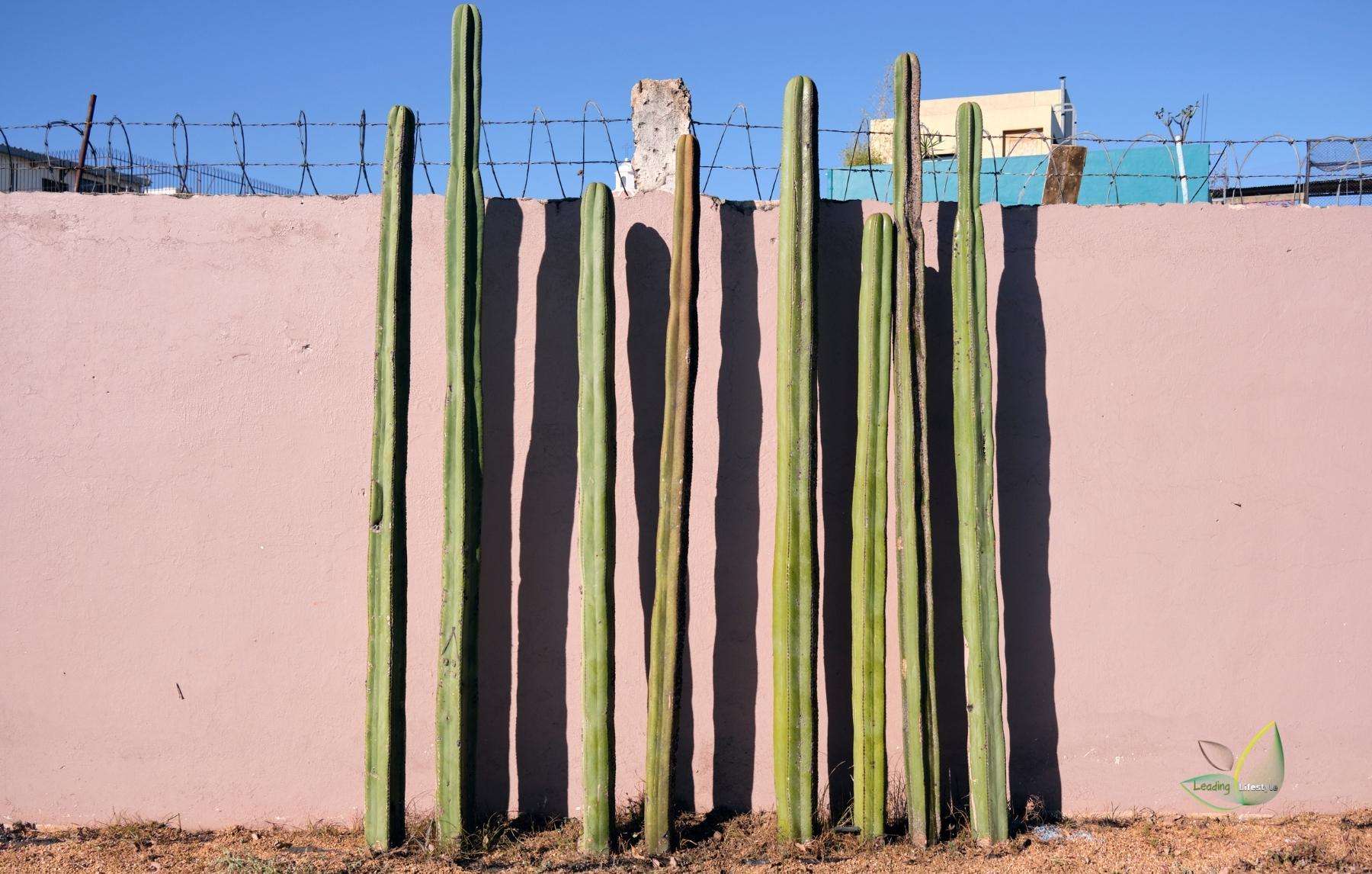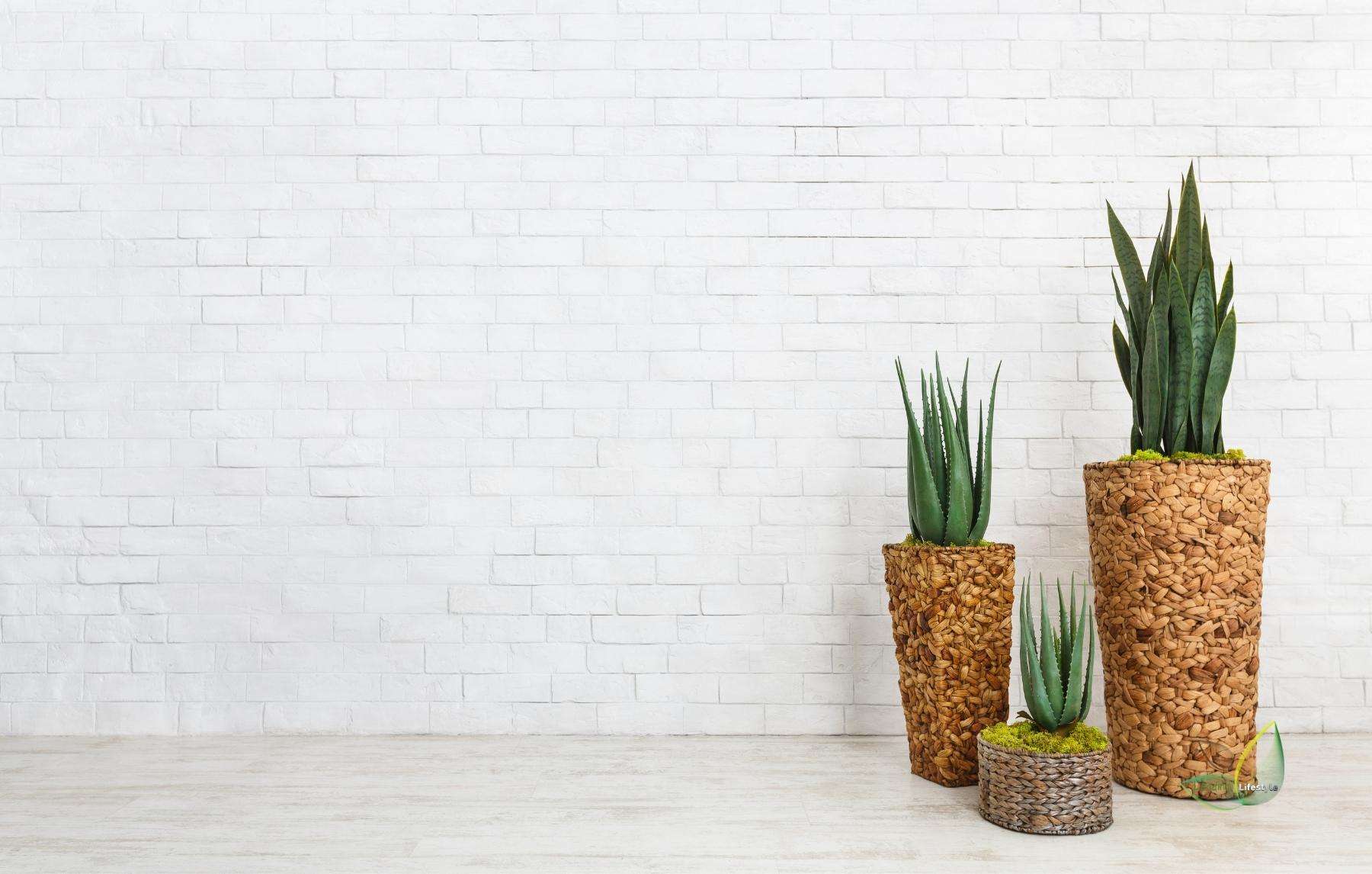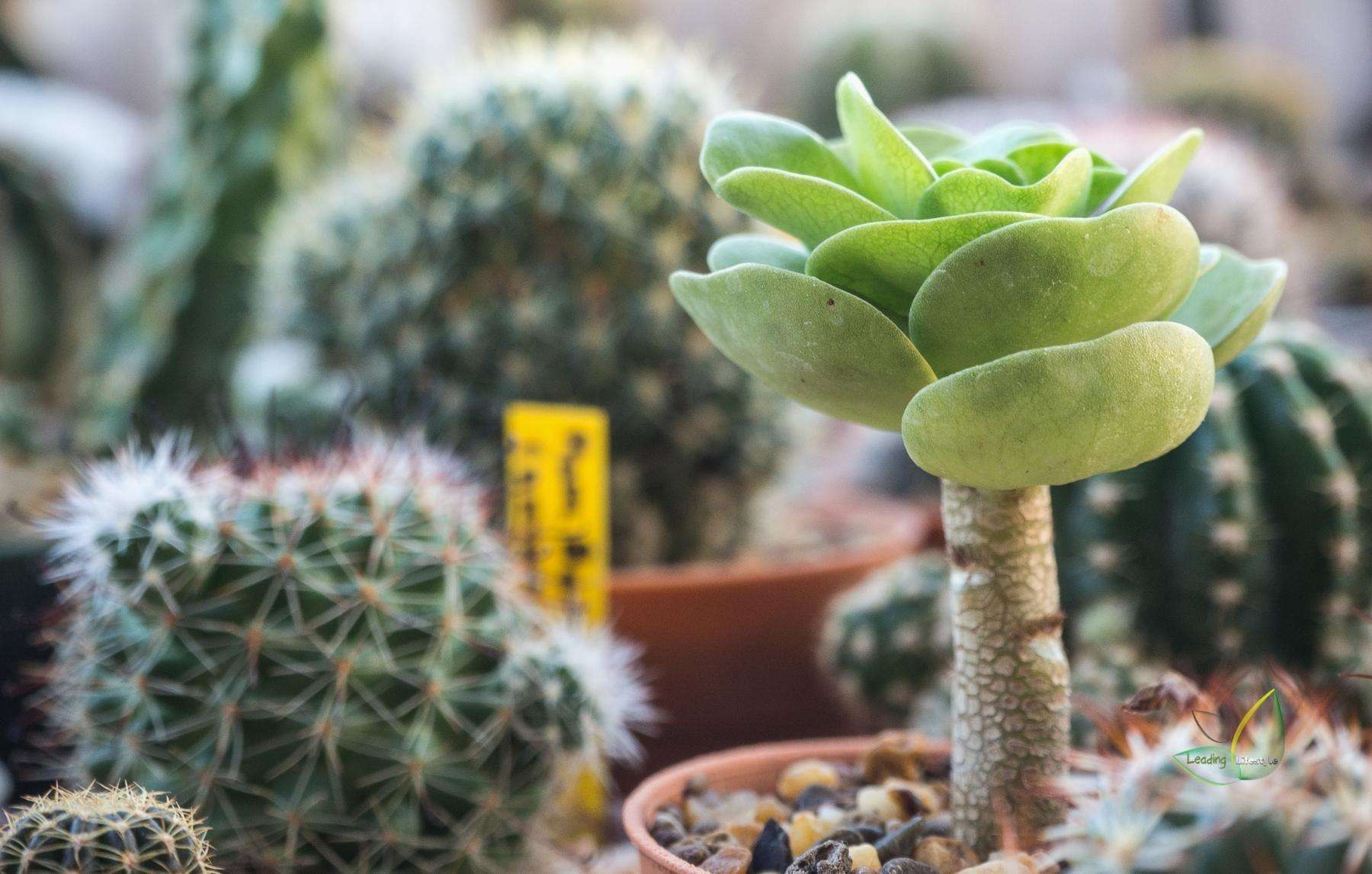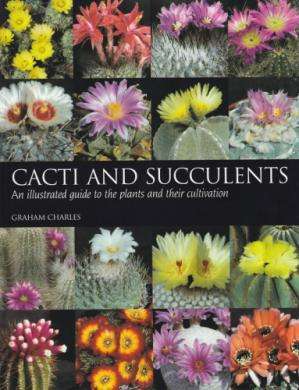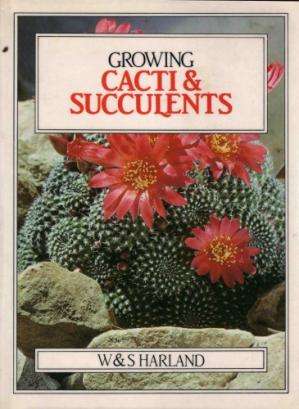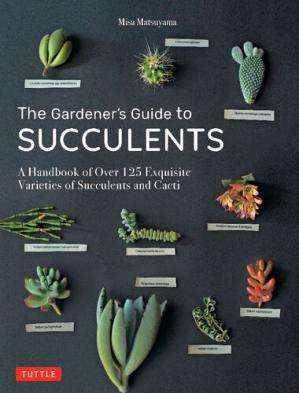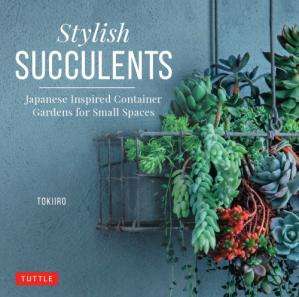When it comes to unique and beautiful houseplants, the petal leaf succulent stands out! Native to Hawaii, this plant is known for its pretty petals and lush leaves.
The petal leaf succulent is worth considering if you’re looking for a plant that will add some serious style to your home!
Petal Leaf is a low-maintenance plant, making it an excellent choice for those new to succulent gardening. This plant does best in soil that drains well and gets bright, direct sunlight.
What is a Petal Leaf Succulent?
The petal leaf succulent, also known as Portulaca molokiniensis, is a beautiful and unique plant native to the Molokini Islands off the coast of Hawaii.
These plants are known for their unique leaves, shaped like petals. These plants are also known for their ability to thrive in hot, humid climates.
This plant is known for its fleshy leaves that look like petals and grow in a rosette shape. The leaves are fleshy and thick, with a bright green top and a purplish-red underside. This plant’s flowers are small, yellow, or golden, and grow in clusters in the center of the rosette.
Petal Leaf Succulent Overview
The Petal Leaf Succulent is a beautiful and unique houseplant from Hawaii. It is a succulent family member with thick, fleshy leaves that store water. The leaves are shaped like petals, hence the name.
The small, yellow or golden flowers of this plant grow in clusters in the middle of the rosette.
Petal Leaf is an easy-care plant that is a great choice for people who are just starting to grow succulents. This plant thrives best in well-drained soil and bright, direct sunlight.Allow the soil to completely dry between waterings.
Where do Petal Leaf Succulents come from?
Petal Leaf Succulents are beautiful and unique houseplants originating from Hawaii. These plants are known for their brightly colored leaves and petals, making them a popular choice for adding a splash of color to any home.
While they are typically found in Hawaii, these plants can also be grown in other parts of the world with the right climate and care.
Why are Petal Leaf Succulents so popular?
Petal leaf succulents are very popular for several reasons. They are beautiful, unique, and easy to care for. In addition, they are native to Hawaii, making them even more special. If you are looking for a beautiful and unique houseplant, a petal leaf succulent is a perfect choice!
Benefits Of Petal Leaf Succulent
Adding a petal leaf succulent to your home décor is a great way to inject some tropical flair. But did you know these unique plants offer more than just good looks? Here are some of the benefits of owning a petal leaf succulent:
- They’re easy to care for:
Petal leaf succulents are very low-maintenance, making them ideal for busy people or those who don’t have a lot of experience with houseplants. They don’t need much water or attention, so you can pretty much set them and forget them.
- They purify the air:
Like all plants, petal leaf succulents help purify the air in your home by absorbing carbon dioxide and releasing oxygen. This can improve your indoor air quality and help you breathe easier.
- They’re stress-relievers:
Looking at plants has been shown to reduce stress and anxiety, so having a petal leaf succulent in your home or office could help you feel calmer and more relaxed. Spend a few minutes staring at your plant when you’re feeling frazzled, and see the amazing result!
Where to Find Petal Leaf Succulents
If you’re looking for a beautiful and unique houseplant, you can’t go wrong with a petal leaf succulent. These plants are native to Hawaii and perfect for adding a tropical flair to your home.
There are a few different ways to find petal leaf succulents. You can purchase them online, or you can find them at a local nursery. If you live in Hawaii, you may even be able to find them growing wild.
Petal leaf succulents make great houseplants because they’re easy to care for and don’t require much water. They’re also very tolerant of low light conditions, so they’re perfect for rooms that don’t get a lot of sunlight.
If you’re looking for a plant that will add some beauty and intrigue to your home, consider a petal leaf succulent. These plants are sure to make a statement in any room.
How Often Do You Water Your Succulent
If you’re like most people, you probably water your succulent once a week. But did you know that succulents can store water in their leaves? This means they don’t need to be watered as often as other plants.
Too much water can be harmful to your succulents. So how often should you water your succulent?
The answer to this question depends on a few factors, including the type of succulent you have, your climate, and how much light your plant is getting.
Overwatering can cause root rot, so be cautious.
This plant is also relatively drought tolerant. It is a slow-growing plant that eventually produces offsets that can be propagated to create new plants.
Requirements for a Petal Leaf Succulent
One of the most beautiful and unique houseplants that you can find comes from Hawaii – the petal leaf succulent. This plant is known for its gorgeous leaves that are ruffled and petal-like.
While they are stunning to look at, petal leaf succulents are also relatively easy to care for. Here are a few tips on how to keep your petal leaf succulent healthy and happy:
- Light: Petal leaf succulents do best in bright, indirect light. If you live in a sunny climate, you can place them outdoors in a shady spot during the warmer months. During the winter or in lower light conditions, you can grow them under fluorescent lights.
- Water: These plants prefer to be on the drier side, so water them only when the soil is completely dry. When you do water, make sure to soak the soil thoroughly. Allow any excess water to drain, and never let your plant sit in water.
- Soil: A well-draining potting mix is essential for petal leaf succulents. You can either purchase a succulent mix from your local nursery or make your own by mixing equal parts sand,
- Temperature: The Portulaca Molokiniensis is used when it is scorching outside. It likes to be warm in the sun, and it will be pleasant in hot places like Hawaii, where it comes from. This succulent is not cold-hardy, so it won’t be able to handle frigid temperatures. (It won’t be able to handle temperatures below 25°F.)
How Do You Care For Petal Leaf Succulents?
Petal leaf succulents are a beautiful and unique houseplant originating from Hawaii. These plants are known for their colorful leaves and ability to thrive in warm, humid conditions. If you’re thinking about adding a petal leaf succulent to your home, here’s what you need to know about caring for these plants.
Petal leaf succulents require bright, indirect sunlight to grow and thrive. If your home doesn’t get a lot of natural light, you can supplement it with artificial lighting. These plants also prefer warm temperatures and high humidity levels, so they’re best suited for rooms that stay fairly warm and humid (like bathrooms).
When it comes to watering, petal leaf succulents are relatively drought-tolerant. Allow the soil to dry out completely between waterings, and then water deeply when needed. These plants don’t like to sit in soggy soil, so be sure to have drainage holes in the pot.
Over-watering is the number one cause of death for petal leaf succulents, so err on the side of too little rather than too much water.
Fertilizing petal leaf succulents is not necessary.
In general, it’s best to err on watering less rather than more. Let the soil dry out completely before watering again. And if you’re not sure, it’s better to wait another day or two before watering. Your succulent will thank you for it!
How To Propagate Petal Leaf Succulent
If you’re looking for a beautiful and unique houseplant, look no further than the petal leaf succulent! Native to Hawaii, this plant is known for its gorgeous leaves that resemble flower petals. And not only is it pretty to look at, but it’s also easy to care for!
One of the best things about petal leaf succulents is that they’re very easy to propagate. If you want to increase your collection or share it with friends, you must take a leaf cutting and place it in a pot of well-draining soil. In no time at all, you’ll have a brand new plant!
Propagating From Cuttings:
If you take a stem cutting from a Portulaca Molokiniensis, it will grow quite quickly.
Here’s a step-by-step guide on how to propagate petal leaf succulents:
- Start with a sharp knife or scissors and cut a leaf from the mother plant. Make sure to cut at an angle so that there is plenty of surface area for the new plant to grow from.
If the tool is dirty, bacteria and other tiny organisms can get into the cut surface and make the plant sick. It won’t be able to grow then.
If the tool isn’t sharp enough, you might have to keep hacking at the stem to get a piece off. This will hurt the surface and might not grow when you try to plant it.
Cut a piece that is as close as possible to the bottom. Let it dry for a few days so the end can harden into a callus. Then, as described above, place the calloused cutting in a pot prepared appropriately with soil.
- Next, prepare your potting mix by mixing sand and peat moss in equal parts. Add some water to the mix and stir until everything is evenly moistened. Once your potting mix is ready, place your succulent there.
- Lightly water the new plant every few days until it gets roots and starts to grow. Soon, you will have a new Portulaca Molokiniensis succulent that is healthy and should germinate well.
Propagating From Seeds:
The Portulaca Molokiniensis drops seeds that can grow into new plants, or you can collect the seeds and use them to start a new plant.
It would be best if you let the seeds dry out for a few days to grow plants from the seeds. Then, they should be sprinkled on top of the soil in a new container and lightly wetted with a few drops of water.
After a few days, the seeds should start to send up little shoots, and a new plant will begin to grow. Lightly water the plant every few days until it starts to grow. Then keep doing what was said above about how to water.
Propagating Petal Leaf Succulents In-Short
Fortunately, propagating petal leaf succulents is relatively easy. All you need is a sharp knife or scissors and some perlite or sand. First, carefully remove offsets (baby plants) from the mother plant. Next, allow the offsets to callus for a few days by letting them sit in the open air.
Once the offsets have callused, you can plant them in a pot filled with perlite or sand. Water lightly and keep the pot in a bright, warm location. With a little care, your offsets will soon take root and grow into new plants!
What To Do If Your Petal Leaf Succulent Is Turning Brown?
If your petal leaf succulent is turning brown, don’t worry!
This is normal and usually nothing to worry about. The leaves of these plants are very thin and delicate, so they can sometimes get damaged easily. If you see brown spots on the leaves, trim them off with a sharp knife or scissors.
If the leaves are completely brown, you can cut them down to the stem.
Don’t be alarmed if you see your petal leaf succulent shedding leaves. This plant is known for its “leaf shedding” behavior, which helps it conserve water in its native habitat of Hawaii. If you live in a dry climate, you may want to mist your plant occasionally to help it stay hydrated.
If your petal leaf succulent is looking a bit sad and wilted, it’s probably due to lack of sunlight. These plants need bright light to thrive, so make sure to place yours in a sunny spot. You can also try moving it outdoors for a few hours each day if possible.
Finally, remember that petal leaf succulents are relatively fragile plants. Be careful not to overwater them or expose them to too much direct sunlight, as this can cause the
Right Pot for Petal Leaf Succulent
When potting your Petal Leaf Succulent, you want to make sure you choose the right size and type of pot. The best way to do this is to determine your plant’s root ball size. Once you know the root ball size, you can choose a pot 2-3 inches wider in diameter.
As for the type of pot, it’s best to choose one made from a breathable material such as terra cotta or unglazed ceramic. These pots will help ensure that your plant’s roots don’t become too wet or humid.
Once you have the right pot for your Petal Leaf Succulent, please give it a good home in a bright spot with plenty of indirect sunlight. With proper care, your plant will thrive and bring you enjoyment for many years to come!
Size Matters
When it comes to houseplants, size does matter. And the bigger, the better when it comes to the petal leaf succulent. This unique plant from Hawaii can grow up to six feet tall and three feet wide, making it a real showstopper in any home.
But don’t let its size fool you; this plant is quite easy to care for and makes an excellent choice for anyone looking for a low-maintenance houseplant.
So if you’re looking for something a little different and a little bit bigger, be sure to check out the petal leaf succulent.
Drainage Is Key
When it comes to succulents, drainage is key. That’s why the Petal Leaf Succulent is a great indoor plant – it doesn’t require a lot of water and can tolerate dry conditions.
However, even this tough plant can suffer if its roots are left sitting in water.
Be sure to empty the drip tray beneath your pot after watering, and never let the plant sit in water for more than a few hours.
If you’re unsure whether your plant needs water, stick your finger into the soil – if it’s dry several inches down, it’s time to water.
Consider The Material
When it comes to houseplants, there are so many different types to choose from. If you’re looking for something unique and beautiful, you should consider the petal leaf succulent. This plant is native to Hawaii and is known for its stunning flowers.
One thing to remember when choosing a succulent petal leaf is the material it is made from. The leaves of this plant are very delicate and can easily be damaged. Pick a lightweight pot or planter that won’t crush the leaves.
You should also avoid using any fertilizer that could burn the leaves.
If you take care of your petal leaf succulent, it will reward you with beautiful flowers that will brighten up any room in your home.
How Toxic Is Petal Leaf Succulent?
Is Petal Leaf Succulent Toxic? Many people are drawn to the beautiful and unique appearance of Petal Leaf Succulent but are unsure about its toxicity.
The good news is that Petal Leaf Succulent is not considered a toxic plant. However, it is important to note that the sap of the plant can irritate if it comes into contact with the skin.
If you have any concerns, it is always best to consult with a healthcare professional or certified poison control center.
Common Pests And Problems with Petal Leaf Succulent
One of the most common problems with petal leaf succulents is pests. Mealybugs, aphids, and scale can all be a problem for these plants. Another common problem is root rot. This can be caused by overwatering or planting the succulents in too much shade.
If you suspect your plant has root rot, it’s important to act quickly. Remove the plant from its pot and inspect the roots. You will need to cut them away if they are black or mushy. Once you have removed all the affected roots, replant the succulent in fresh soil and water it deeply.
Pest Problems:
One of the great things about petal leaf succulents is that they are relatively resistant to pests and diseases. However, there are a few things to watch out for.
One common problem is mealybugs. These small, white insects feed on succulent plants and can quickly weaken and kill them. If you see any mealybugs on your plant, carefully remove them with a cotton swab dipped in rubbing alcohol.
Another problem to watch out for is root rot. This can happen if the plant is overwatered or the potting mix is too wet. If you think your plant might have root rot, take it out of the pot and check the roots. The plant has root rot if brown and mushy and must be treated immediately.
Disease Problems:
Petal Leaf Succulent – A Beautiful and Unique Houseplant From Hawaii
Disease problems are relatively rare with petal leaf succulents. However, as with any plant, they can occasionally be affected by pests or diseases. Watch for signs of trouble and take action immediately if you see anything unusual.
Common pests affecting petal leaf succulents include aphids, mealybugs, and scale insects. These pests can cause the leaves to discolor or deform. If you see any of these pests on your plant, treat them with an appropriate pesticide or insecticide.
Petal Leaf succulents are also susceptible to fungal diseases such as powdery mildew and root rot. These diseases can be difficult to control, so catching them early is important.
Watch for signs of disease such as yellowing leaves, wilting, or stunted growth. If you see any of these symptoms, treat the plant with a fungicide.
Other Problems:
If your succulent is not looking its best, a few other things could be wrong. Here are some troubleshooting tips:
– If the leaves are wilting or turning yellow, it could be a sign of overwatering. Allow the soil to dry out completely before watering again.
– If the leaves are brown and crispy, it could be a sign of under-watering. Water more frequently, making sure to soak the soil thoroughly each time.
– If the plant grows leggy (stretched out), it could signify too much sun. Move it to a shadier spot.
– If the plant looks pale or yellowish, it could signify too little sun. Move it to a sunnier spot.
Best Soil To Grow Petal Leaf Succulent
When it comes to succulents, the type of soil you use can make a big difference in how well your plant grows. For petal leaf succulents, it’s best to use light and well-draining soil. This will help prevent the leaves from rotting and allow the roots to breathe.
One of the best ways to ensure your petal leaf succulent gets the right amount of drainage is to mix it with perlite or sand. This will help create more airflow around the roots and also help to keep the soil from becoming too compacted.
When it comes time to water your petal leaf succulent, be sure to do so sparingly. These plants don’t like to sit in wet soil, so it’s best to err on the side of drought when it comes to watering. Allow the top few inches of soil to dry out before watering again.
With proper care, your succulent petal leaf will thrive and provide you with beautiful blooms for many years!
Petal Leaf Succulent Fertilizer
If you’re looking for a way to add extra interest to your succulent collection, consider the petal leaf succulent. This beautiful and unique plant is native to Hawaii, and its unusual leaves have a ruffled, petal-like appearance.
The petal leaf succulent is relatively easy to care for. Still, like all succulents, it does require some specific growing conditions. One of the most important things to remember when caring for this plant is to use the right fertilizer.
While standard succulent fertilizers will work fine for the petal leaf succulent, using a fertilizer specifically designed for ruffled or petaled leaves can boost your plant. Look for a fertilizer with high levels of phosphorus, which will help encourage strong growth and vibrant leaves.
When applying fertilizer, be sure to follow the directions on the package carefully. Over-fertilizing can damage your plant, so it’s always better to err on the side of caution. Apply fertilizer every two weeks during the growing season, then reduce the frequency to once a month during the winter.
With proper care, your petal leaf succulent will thrive and provide you with years of enjoyment.
Pruning petal leaf succulent
Pruning a petal leaf succulent is a simple process that can be done with a sharp knife or gardening shears. Cut off any dead leaves or stems that are brown or black. You can also trim back any leaves that are significantly smaller than the rest. Pruning will help encourage new growth and keep your plant looking its best.
Is petal leaf succulent Good For Air?
If you’re looking for a plant that can help purify the air in your home, you may want to consider a petal leaf succulent. This unique houseplant is native to Hawaii and is known for its ability to absorb harmful toxins from the air.
Petal leaf succulents are also very easy to care for, making them a great choice for those who don’t have much time to spend on plant maintenance.
Conclusion
The petal leaf succulent is a beautiful and unique houseplant from Hawaii. It is perfect for anyone looking for something a little different to add to their home. These plants are easy to care for and make a great addition to any indoor space. If you are looking for a plant that will stand out, the petal leaf succulent is one to consider.


